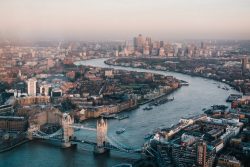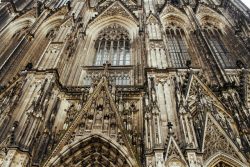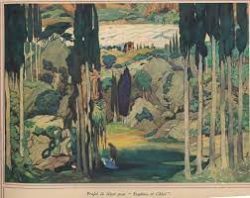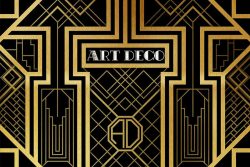Art Deco is a style of architecture that was very popular in the 1920’s and 1930’s. The main point of the design is to have geometric shapes. Straight lines, sharp points. There would also be strong colors. In other words more like all business and no wishy washy designs. Art Deco is best explained as simple designs.
Contents
Art Deco was a sign of modern times. People could order luxury items as well as mass produced by machine items for their homes, for their wardrobes. Although Art Deco was very rarely mass produced. The style could use man made items and also natural items such as jade, silver and rock crystal.
Art Deco had a few different influences to it. Cubism, Art Nouveau and the Bauhaus to name just a few. Many of the decorative ideas came from the Egyptians, the Indigenous tribes, and just from nature itself. Of the famous Art Deco creators, most of them created unique items and one of a kind, some would make limited editions. These creators were in jewelry and art, furniture, buildings and fashion.
South Beach in Miami was taken over by Art Deco in the 1930’s. This style produced an entire area that is now called ‘The Art Deco Historic District’. Although the style did go out of fashion during the second World War, Art Deco found a renewed sense of popularity in the 1960’s. Art Deco still has its place in jewelry and fashion, as well as decorative art.
Within one square mile, you can tour over 800 examples of Art Deco. With so many different options, we put a list together of what are the Top Ten Art Deco Buildings in Miami.
1. The Cavalier Hotel

Located at 1320 Ocean Drive, the Cavalier Hotel was built originally in 1936 and designed by Roy France. The horizontal decorative lines are significant for this building, for more than the obvious reasons. The architect put them in place to add symmetry to the design. This followed the Art Deco rule of three, and drew the eyes upward to view the whole building.
Roy France understood that this symmetry reflected the fascination he found in Ancient Civilizations. This fascination came about due to the recent finding of King Tut’s Tomb and the Chichen Itza Temples, or the rediscovery of these historic places. The Cavalier Hotel sits across the road from the beach road and gives guests the ultimate views of the Atlantic.
2. Park Central Hotel
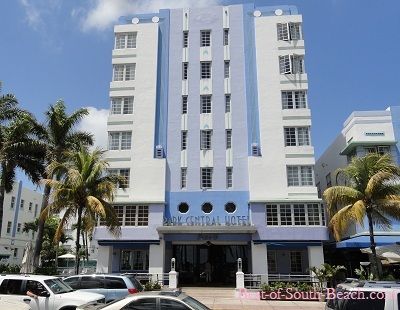
Henry Hohauser is the architect of this fabulous Art Deco building known as the Blue Jewel. This landmark hotel was erected in 1937, complete with Terrazzo floors, that is cement and stone chips that are poured and then highly polished.
This is one of the hallmarks of Art Deco Design. During this period of time, the Terrazzo floors were made with geometric designs. Park Central Hotel is called ‘The Blue Jewel’ due to the neon marquee on the front of the building.
The Blue Jewel, Park Central Hotel is located at 640 Ocean Drive. Just one of many Art Deco buildings.
3. Bass Museum

As one of the oldest buildings, the Bass Museum was built in 1930, and was originally the Miami Beach Public Library. This is what they called a sublime example, and one of the finest in the Art Deco period. The building has an air of being regal with the wide stairs with the wings on either side of them.
This wonderful building is covered with parts of nature, with a fossilized paleolithic coral that gives texture to the outside and also has the naturally aging colors of the coral. Above the main entrance one will see depictions of the Conquest of Florida by the Spaniards and also see glorious pelicans.
As one of the main keystones of Miami, the building stands apart from the rest as it is not a subtle building but rather proud of the gorgeous details captured on the building itself.
4. The Webster
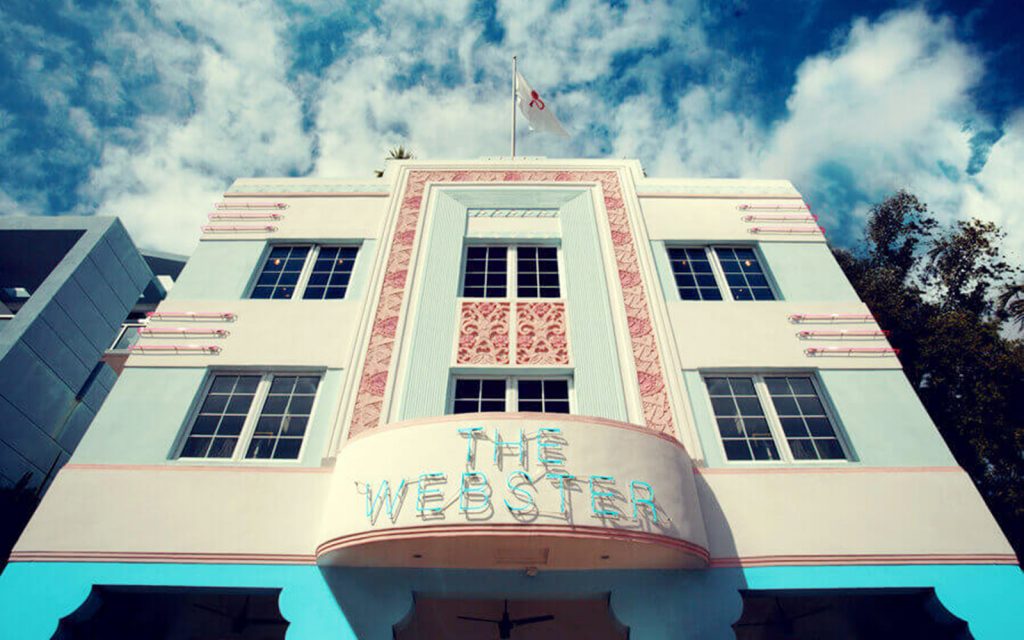
Another one of Henry Hohauser designs made its way into South Beach in 1939. Henry Hohauser will always be considered one of the major Art Deco architects in Miami. The Webster is one of these classics from Hohauser’s portfolio. Once again, Hohauser stuck with the rule of three as the building appears to be in a set of three sections, three windows across, as well as three floors.
Although the building has switched businesses many times over the years, the design remains the same, as does most of the decor. The Terrazzo floors, the gleaming staircases and the pastel colored interior decorations all remain and emphasize the Art Deco of this great piece of architecture.
5. The Essex House Hotel

Some would say that Henry Hohauser outdid himself with the example of Nautical Moderne. Designed to look like an ocean liner that is landlocked, the building was designed in 1938. The buildings windows were designed like porthole windows, and the front that looks to be a prow, ready to set sail.
The building also includes a smokestack design and racing stripes that encircle the building and also continue throughout the inside. As guests take in the views, they notice the subtle marine style elements located throughout the building. Famous Painter Earl Lapan designed and painted many of the murals throughout South Florida, one main mural is over the fireplace at The Essex House Hotel.
6. The Cadillac Hotel
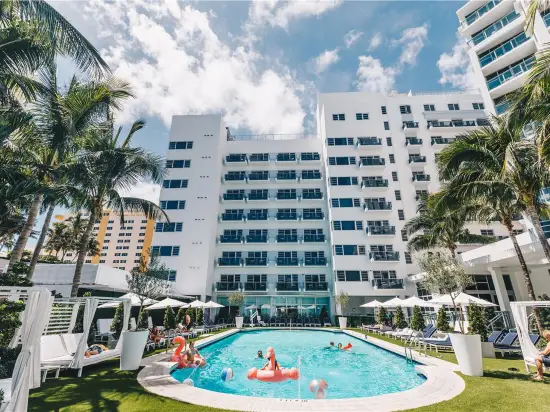
In the 1940’s just on the outskirts of South Florida, sits a building designed by Roy France. It is named the Cadillac Hotel and does resemble, to a certain extent, a premium Cadillac motor. The building has gorgeous chrome trim and a portico over the drive that resembles a Cadillac car hood, complete with the hood ornament.
This is one of the tallest buildings from the era. Included are beautiful Terrazzo floors and a ceiling that is embossed with palm trees. Even the outdoor furniture next to the pool resembles a grill off one of the famous Cadillac vehicles. Although owned by one of the top hotel chains, they have ensured that the Cadillac Hotel retains its original Art Deco charm.
7. The Carlyle Hotel
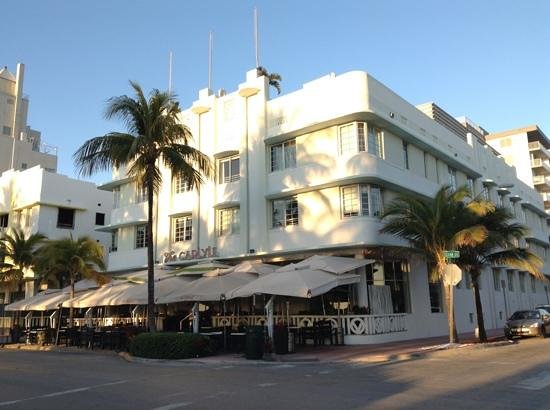
This iconic Art Deco landmark was built in 1941. The Carlyle is famous for more than just the Art Deco style, the historic significance of the era and the design. The Carlyle Hotel is a sort of movie star in its own rights. The Hotel has been featured in many Hollywood movies over the years. The Rule of Thirds also was incorporated into the Carlyle when it was designed.
It has three divided vertical sections capped off with step tops. The Carlyle, however, has a much more muted color palette than most of the buildings built during this time period. The Carlyle is sea foam green with white. The Carlyle is no longer a public building per se’. It is a private residence that rents out vacation condos.
8. The Colony Theater
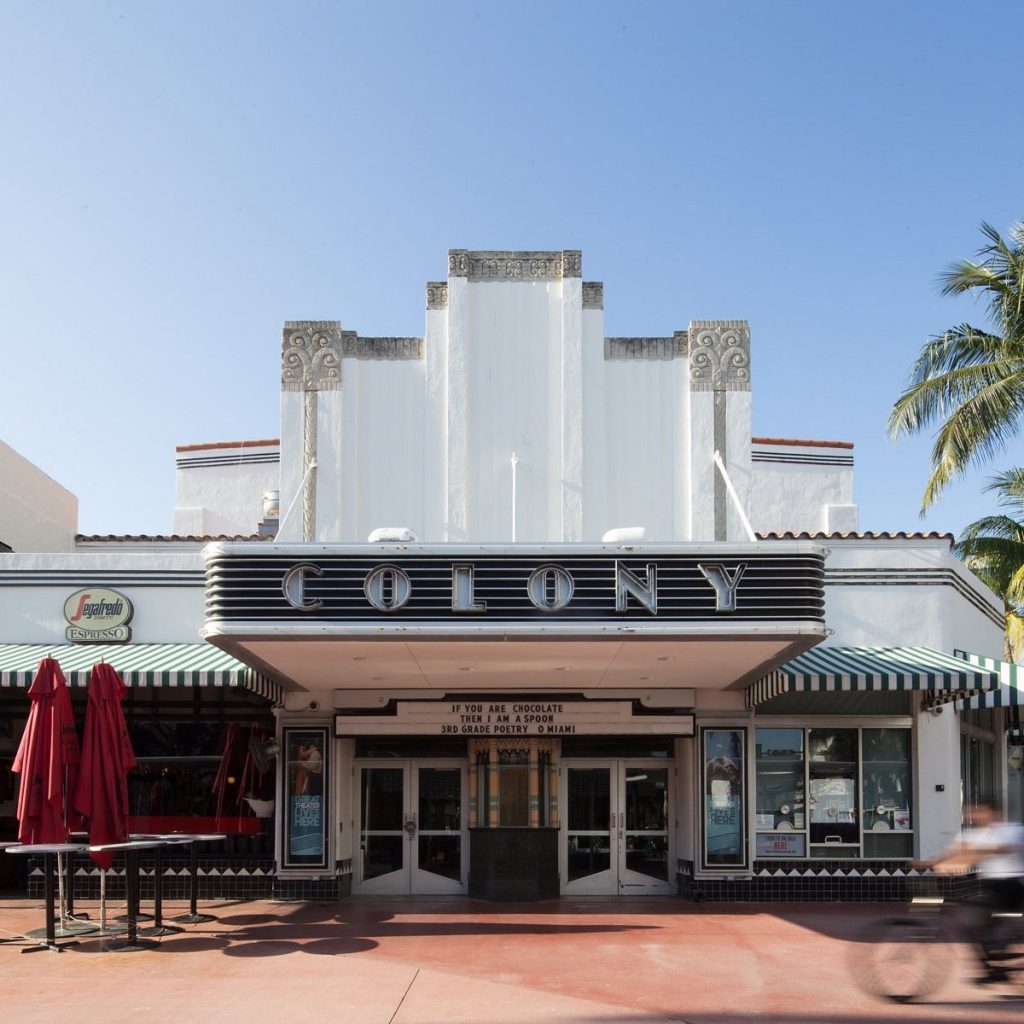
This building was originally built for Paramount Theaters in 1935. It is considered the gem of Art Deco. This building is one of the best maintained to keep the Art Deco style and decor. The Terrazzo flooring includes geometric patterns and the bold lines that Art Deco is known for.
The original architect was RA Benjamin. While maintaining the Art Deco design, the owners gave this performing arts building a complete renovation. As one of the most fashionable centers, the Colony Theater includes an impressive marquee and restored Ticket booth.
9. The Breakwater

The Breakwater is a highly loved icon in the South Beach area. This is one of the tallest structures in the Art Deco period. The Breakwater is a towering spectacle of neon lighting. Designed in full symmetry and colorful lines make the Breakwater stand out among the other buildings.
Built in 1936, and designed by a Yugoslavian designer, this towering beauty underwent an extensive renovation and maintained its standard as a jewel among the Historic Art Deco district and is now back to its original glory.
10. The Raleigh Hotel
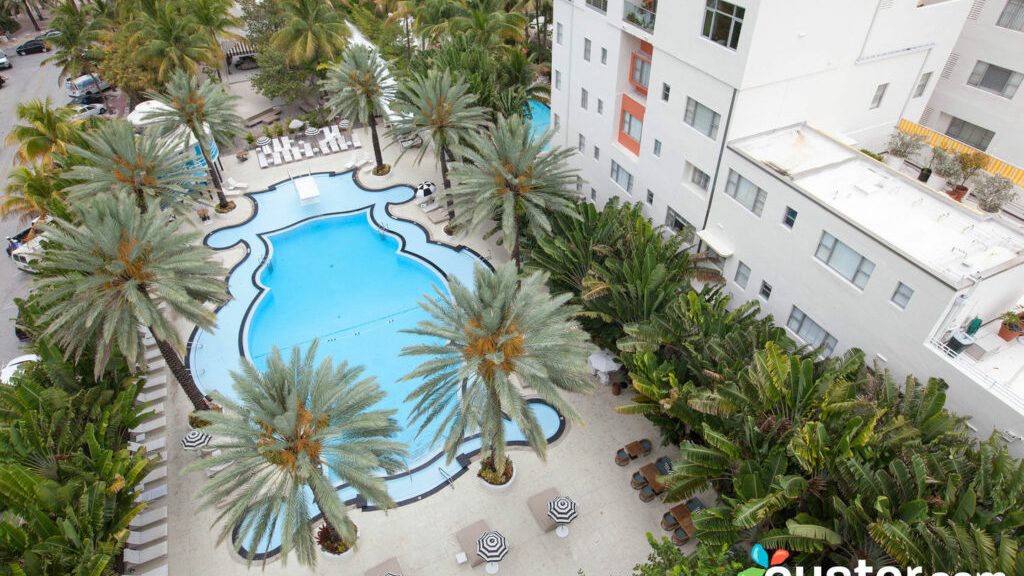
L. Murray Dixon designed the Grand Dame of Art Deco buildings and it was built in 1940. Life Magazine honored the Raleigh Hotel in 1947 due to the curvy and beautiful pool, calling it the best in America. The lobby was designed with polished stone and the entire lobby is lit with recessed neon lighting. The Raleigh is a true example of streamlined Art Deco.
The Raleigh was truly an unpretentious, yet modern look for the Art Deco period. However, at this time, The Raleigh is no longer open due to the severity of damage the iconic building suffered from Hurricane Irma in 2017.
All of these buildings still stand in the historic Art Deco district. It is well worth taking a walking tour to view the gorgeous lines, decor and beauty of these wonderful buildings. There are over 800 historic buildings to take in a small area. The majority of the buildings still have all the original decor and have been maintained immaculately.

